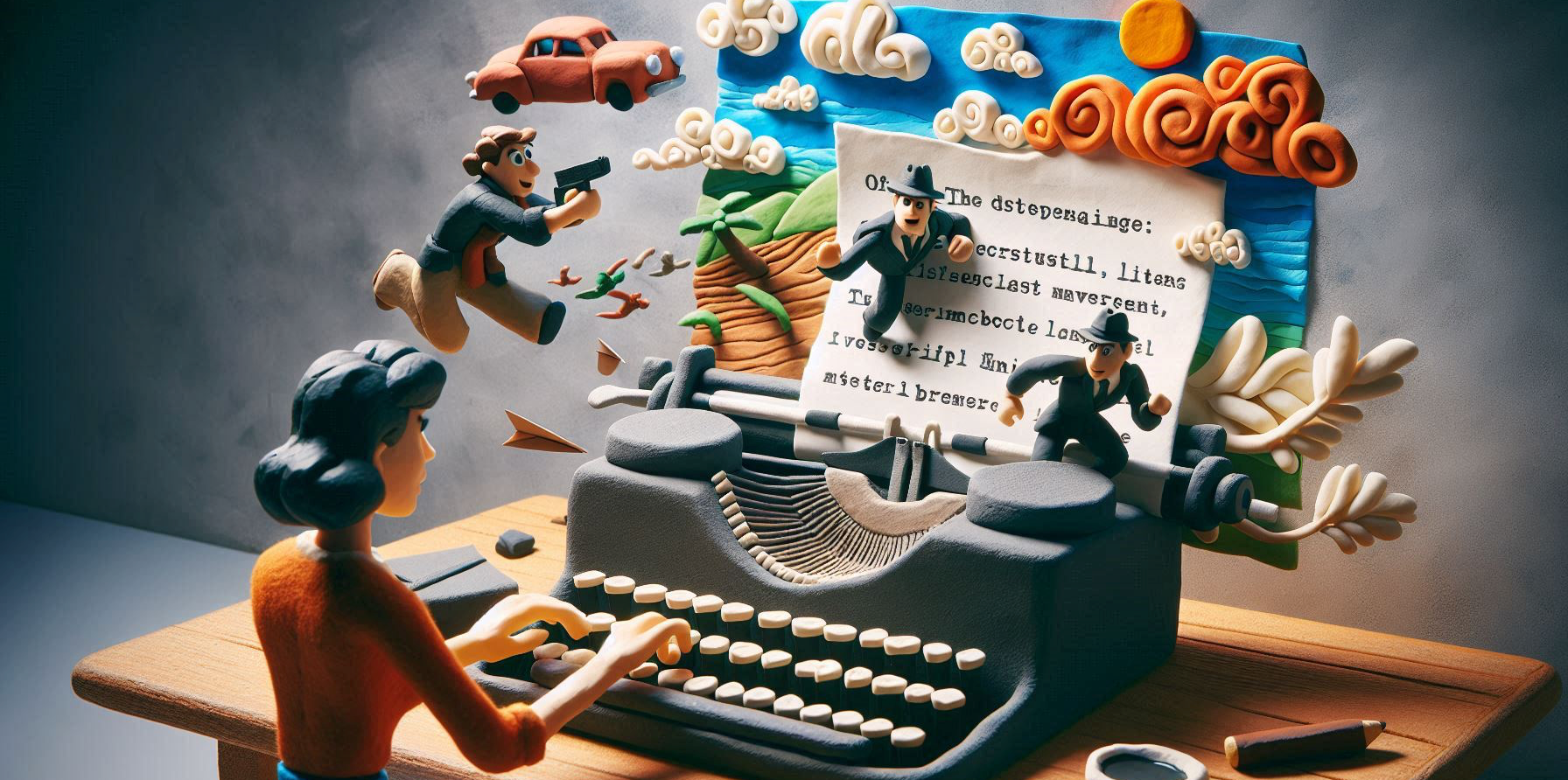When writing fiction, a scene is a fundamental narrative unit that shapes the story’s structure. Each scene is defined by key elements such as characters, setting, and action, and plays a crucial role in driving the plot forward. Understanding how to classify and structure scenes is essential for crafting a compelling novel or screenplay that keeps readers engaged.
There are three main types of scenes based on their function in the plot: action scenes, reaction scenes, and setting scenes. Mastering their differences helps control narrative tension, pacing, and emotional depth, making the story more immersive. However, writing powerful scenes goes beyond classification—it requires a deep focus on conflict, rhythm, and engagement to maintain reader interest and enhance storytelling impact.
Action Scenes: Driving the Story Forward
The term “action” does not necessarily mean fights or thrilling chases. What defines an action scene is that something significant happens: The character performs an action with a clear purpose.
Examples:
- A detective interrogates a suspect.
- A young fighter enrolls in a karate academy.
- A character confronts their boss to demand a promotion.
How to Make Action Scenes More Impactful:
- Raise the stakes: What does the character stand to lose or gain?
- Create obstacles: Make sure the path to success is not easy.
- Use vivid details: Engage the senses to make the moment feel real.
- Keep the pacing tight: Cut unnecessary exposition to maintain momentum.
- Introduce conflict: Internal or external opposition makes an action scene more gripping.
- End with a hook: Leave the reader wanting more by finishing the scene with a question, a revelation, or a cliffhanger.
One way to elevate an action scene is by using subtext—not just what happens, but what is left unsaid. For example, if a detective questions a suspect, the tension may not come from what they say but from the slight hesitation in their voice or a glance towards the door. Layering in these details makes the scene more compelling.
Conflict is an essential ingredient in action scenes, and it often stems from the antagonist’s role in opposing the protagonist’s goals. Whether it’s a person, an internal struggle, or an abstract force, a strong antagonist is what drives the narrative tension forward. Understanding how an antagonist shapes the story’s conflict and structure can help writers craft more engaging and high-stakes scenes.
Action scenes are essential because they drive the plot forward. They create momentum, tension, and stakes that keep readers invested. However, too much action without breaks can be exhausting. This is where reaction scenes come into play.


Reaction Scenes: Giving Depth to Characters
After every action, the character needs to process what has happened. Reaction scenes show their emotional state, doubts, or strategies for the future. They allow the reader to step inside the character’s mind and understand their motivations on a deeper level.
Examples:
- The aspiring fighter loses his first match and feels discouraged.
- The detective questions the suspect’s honesty and reviews the clues.
- After the argument with their boss, the character reflects on whether they did the right thing.
How to Make Reaction Scenes More Impactful:
- Show, don’t tell: Use body language, dialogue, and setting to reveal emotions.
- Keep it active: Instead of long internal monologues, show characters reacting through actions.
- Tie it to the next decision: The reaction should lead to a new resolution or action.
- Add internal conflict: Make the character question their choices or beliefs.
- Use subtext: Let readers infer emotions rather than stating them outright.
Reaction scenes should not feel like pauses but rather moments of recalibration. A great reaction scene will create a turning point for the character, making them reconsider their goals, deepen their resolve, or even spiral into doubt and fear. Use them strategically to add depth without slowing the story down excessively.
Besides, since these moments often shape the protagonist’s transformation, they are essential in defining the overall character arc. Understanding how character arcs develop and influence a story can help create reaction scenes that feel meaningful and contribute to the narrative’s progression.
Often, these scenes lead to a new narrative push, triggering another action scene. They are crucial for giving depth to characters and allowing readers to connect with them, but overusing them can slow down the story.
Setting Scenes: Enhancing Atmosphere and Immersion
These scenes don’t advance the main plot but provide information about the world where the story takes place. They allow us to explore the context and enrich the narrative atmosphere, giving the reader a stronger sense of place.
Examples:
- A detailed description of the protagonist’s neighborhood.
- A character reminiscing about a past event that doesn’t directly impact the plot.
- A day in the life of a secondary character to add depth to the story’s world.
How to Make Setting Scenes More Impactful:
- Use dynamic description: Incorporate movement and action within the setting details.
- Tie it to emotion: Describe the setting through the character’s perspective and mood.
- Blend it with action or reaction: Avoid long paragraphs of pure description; instead, integrate it within another type of scene.
- Add contrast: Use the setting to mirror or oppose the character’s inner state.
- Give it purpose: Ensure the setting contributes to the mood, theme, or upcoming events.
One of the best ways to make setting scenes more engaging is to show the world through a character’s senses. For instance, if a protagonist is walking through a market, instead of merely stating the presence of vendors and colorful stalls, describe the aroma of roasted nuts, the chatter of bargaining customers, and the sun glinting off copper pots. This immerses the reader and makes the scene more vivid.
Similarly, crafting detailed and vivid character descriptions enhances the reader’s connection to the individuals populating your story. By focusing on unique traits and integrating them seamlessly into the narrative, you can bring your characters to life in the reader’s imagination.
Setting scenes should be used sparingly since they pause the story’s pace. In many cases, it’s better to weave world-building elements into an action or reaction scene rather than dedicating an isolated passage to them.
Finding the Right Narrative Balance
To keep the reader engaged, review your structure and ensure a balance between action, reaction, and setting scenes. Action should dominate to keep the story moving, but it also needs reaction moments for characters to develop. Occasionally, a touch of setting description will help immerse the reader in the world you’ve created.
A well-structured story is like a rhythm—action builds excitement, reaction deepens the experience, and setting provides context. By mastering these three types of scenes and crafting each with tension, conflict, and emotional depth, you’ll create a story that flows seamlessly and keeps readers turning the pages.
Additional Tips for Writing Engaging Scenes:
- Start late, leave early: Begin scenes in the middle of the action and end before they drag on.
- Use strong openings and closings: A gripping first line and a thought-provoking final moment make scenes unforgettable.
- Develop character voice: Each scene should reflect the character’s personality, emotions, and point of view.
- Balance dialogue, action, and description: Keep a natural flow that avoids info-dumps or monotonous narration.
- Vary scene length: Short, punchy scenes increase tension, while longer scenes allow for deeper exploration.
- Test the scene’s necessity: Ask yourself: Does this scene advance the plot, develop character, or enhance atmosphere? If not, consider revising or removing it.
- Use foreshadowing: Set up future events subtly within scenes to create intrigue.
- Control pacing: A mix of fast-paced and slower scenes helps maintain engagement without overwhelming the reader.
By applying these principles, you can craft scenes that captivate readers, maintain narrative tension, and build an unforgettable story.
